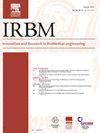Facial Palsy Characterization Using Dual Regression Trees
IF 5.6
4区 医学
Q1 ENGINEERING, BIOMEDICAL
引用次数: 0
Abstract
1) Objectives: The current facial recognition tools are inefficient in predicting landmarks for facial palsy patients. Noticeable asymmetry in the face results in inaccurate results as the prediction models are trained on symmetrical faces. In this study, a method is proposed which takes advantage of the existing powerful machine learning tools which are trained on datasets of healthy subjects with symmetric facial movements to create a system that can analyze and localize facial landmarks on both healthy as well as facial palsy subjects.
2) Methods: The task is accomplished by a simple image processing algorithm where two symmetric faces are generated from a non-symmetric face image representing the left and right sides of the original image. This method was tested against two other methods. One, which uses the cascade of regression trees (CRT) algorithm and the other which is a retrained version of the CRT algorithm on a dataset of facial palsy cases called Massachusetts Eye and Ear database and model (MEE).
3) Results: The methods were compared on 3 different types of test datasets containing a total 125 images. The proposed method outperforms other two methods in cases of asymmetrical faces from healthy people and palsy patients with approximately 7% lesser error compared to the CRT method and 39% lesser error than the MEE method.
4) Conclusion: The proposed method had a considerably better performance compared to the other two methods, which opens new perspectives to address the problem of face landmarks localization problem on facial palsy cases.

使用对偶回归树表征面瘫
1)目的:目前的面部识别工具在面瘫患者地标预测方面效率低下。由于预测模型是在对称的面部上训练的,因此面部明显的不对称会导致预测结果不准确。在本研究中,我们提出了一种方法,利用现有强大的机器学习工具,在具有对称面部运动的健康受试者数据集上进行训练,创建一个可以分析和定位健康和面瘫受试者面部标志的系统。该任务通过一种简单的图像处理算法完成,该算法从非对称的人脸图像中生成两个对称的人脸,分别表示原始图像的左右两侧。这种方法与另外两种方法进行了对比试验。一种是使用级联回归树(CRT)算法,另一种是在面瘫病例数据集马萨诸塞州眼耳数据库和模型(MEE)上对CRT算法进行再训练。3)结果:在3种不同类型的测试数据集上进行比较,共包含125张图像。该方法在健康人群和瘫痪患者面部不对称情况下的定位误差比CRT法小约7%,比MEE法小39%,优于其他两种方法。4)结论:该方法的定位误差明显优于其他两种方法,为解决面瘫患者面部标志定位问题开辟了新的视角。
本文章由计算机程序翻译,如有差异,请以英文原文为准。
求助全文
约1分钟内获得全文
求助全文
来源期刊

Irbm
ENGINEERING, BIOMEDICAL-
CiteScore
10.30
自引率
4.20%
发文量
81
审稿时长
57 days
期刊介绍:
IRBM is the journal of the AGBM (Alliance for engineering in Biology an Medicine / Alliance pour le génie biologique et médical) and the SFGBM (BioMedical Engineering French Society / Société française de génie biologique médical) and the AFIB (French Association of Biomedical Engineers / Association française des ingénieurs biomédicaux).
As a vehicle of information and knowledge in the field of biomedical technologies, IRBM is devoted to fundamental as well as clinical research. Biomedical engineering and use of new technologies are the cornerstones of IRBM, providing authors and users with the latest information. Its six issues per year propose reviews (state-of-the-art and current knowledge), original articles directed at fundamental research and articles focusing on biomedical engineering. All articles are submitted to peer reviewers acting as guarantors for IRBM''s scientific and medical content. The field covered by IRBM includes all the discipline of Biomedical engineering. Thereby, the type of papers published include those that cover the technological and methodological development in:
-Physiological and Biological Signal processing (EEG, MEG, ECG…)-
Medical Image processing-
Biomechanics-
Biomaterials-
Medical Physics-
Biophysics-
Physiological and Biological Sensors-
Information technologies in healthcare-
Disability research-
Computational physiology-
…
 求助内容:
求助内容: 应助结果提醒方式:
应助结果提醒方式:


